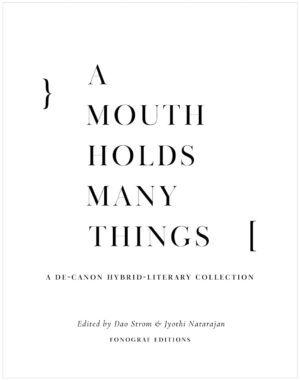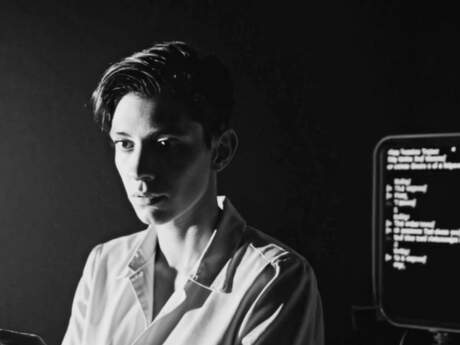On Poetry
A Mouth Holds Many Things
A Mouth Holds Many Things: A De-Canon Hybrid-Literary Collection presents works from 36 women and nonbinary BIPOC writer-artists. This groundbreaking, full-color print volume spans experimental poetry and prose, image-text, collage, performance writing, and AI-generated works and illuminates the fluid, interstitial spaces where text merges, dissolves, and transforms alongside visual and other media. While editing the anthology, Dao Strom and Jyothi Natarajan noted that they "...began to observe the subtle echo of a number of thematic impulses among the contributions.... Interrogations of the past, often as an accumulation of loss or as hauntings, have led quite a few writers to use hybrid forms as a way to play with gaps in the archives, whether it was remixing visual artifacts, culling from family archival materials, writing poems into absences and cracks in-between, or embracing the elusiveness of documentation. Several of our writers seemed to migrate toward hybridity at times when words were not enough or were difficult to access. Here, the gaps are opacities, ruptures, distortions, and silences in language and speech. We saw how hybridity begins to form bridges or portals at the peripheries of language." The work of the two poets reprinted here, Diana Khoi Nguyen and Cindy Juyoung Ok, as well as their artist statements, exemplify this sentiment.
from Eclipses
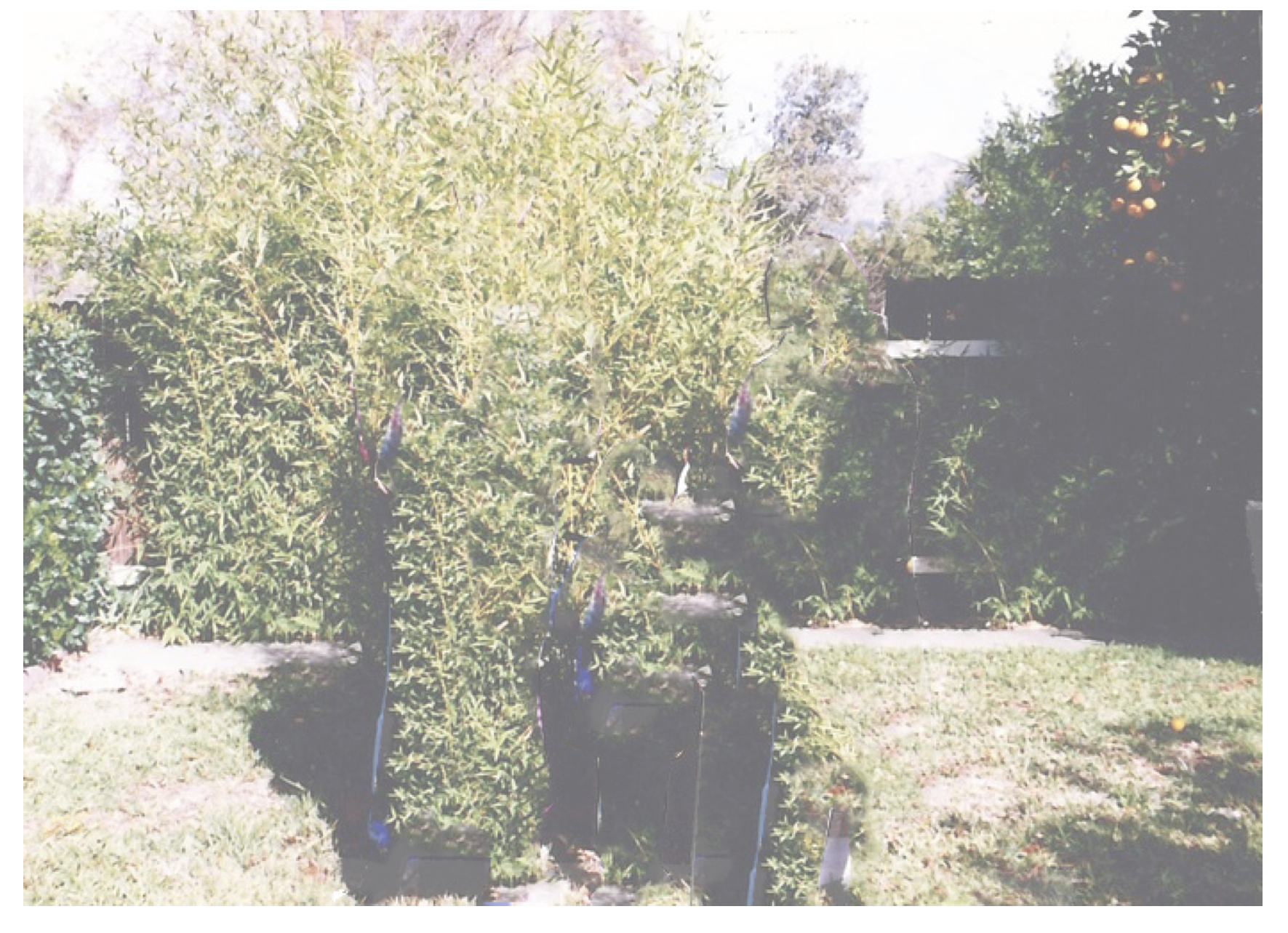
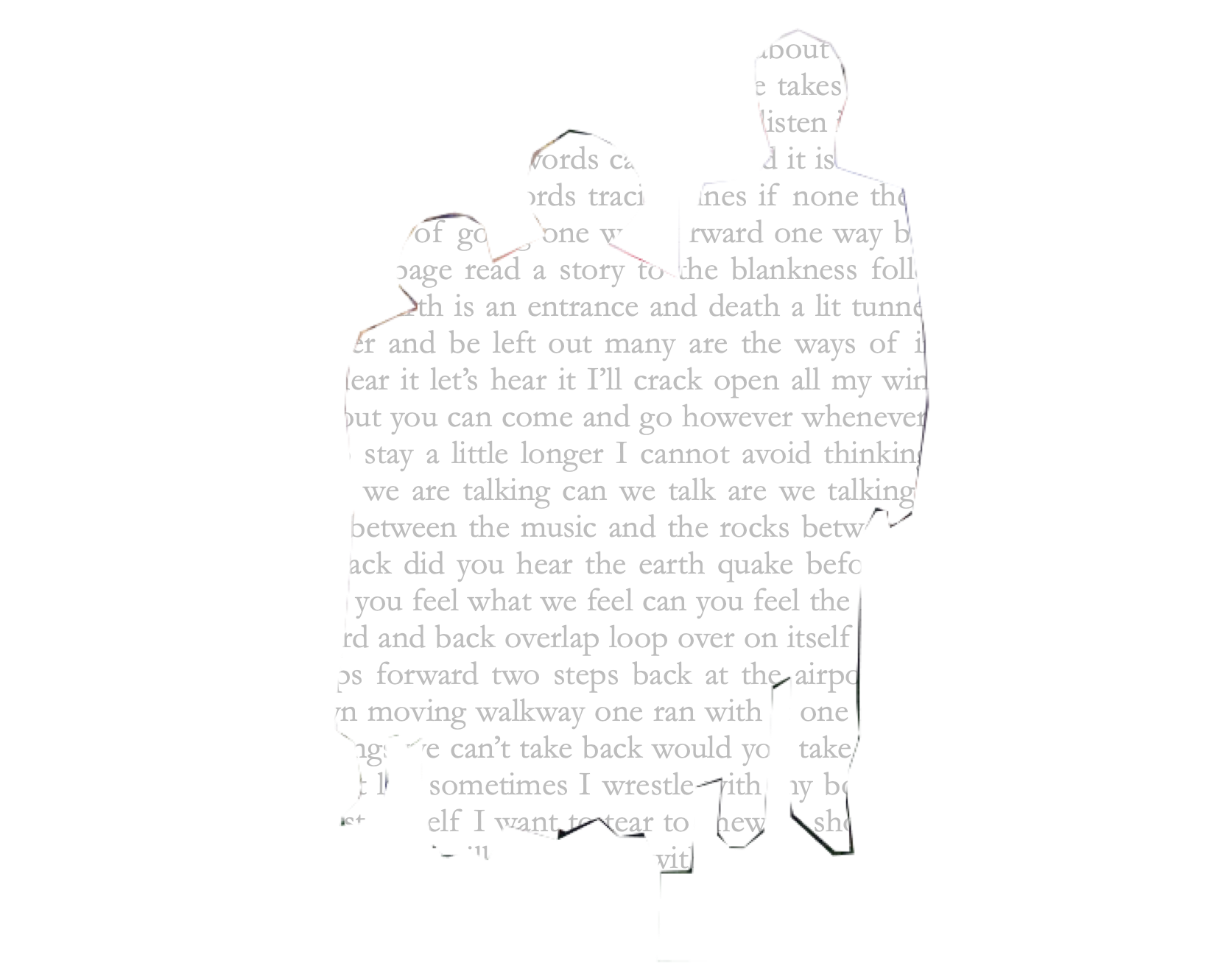

Every year around the time of the anniversary of my brother's death, I revisit the family portraits where my brother cut himself out. These cutout photographs have become a kind of ancestor that I treat as if part of my ritual practice with an ancestor altar. That is to say, I carefully and tenderly hold space and time with the images, then pour myself in thought into the literal spaces of the photograph. This one particular year, I reflected on the act of tracing around one’s body in order to remove it from its frame and context. Instead of doing this with a physical blade, as my brother did, I used a lasso tool in an image editing program, zooming into the collective body of the family. When I finished tracing around our family shape, I hit “delete,” expecting an instant erasure, for a white void to fill in the space I had traced. Instead, and somewhat remarkably, the family faces and bodies disappeared, but instead of white space replacing those bodies, the background material filled in. So, in this case, bamboo filled in where the family had been, the stucco wall replicated itself, and so on. It was so uncanny but also feels very true to how things move on—the landscape continues to grow or exist, regardless of whether or not the living bodies are there anymore. Which is to say—I never proceed in the writing / making process consciously thinking about hybridity; instead, my practice revolves around life emotions and actions done because they feel essential—in my constantly evolving grief for my deceased brother, I return to the altar of where his absence is, and try to look and listen carefully in that liminal space; this often involves then entering physically into the photographic archive in some way. To find where I might speak, where language might emerge in the rupture and new layers.
—Diana Khoi Nguyen
TRANSLATOR / BEFORE THE DMZ, 1951

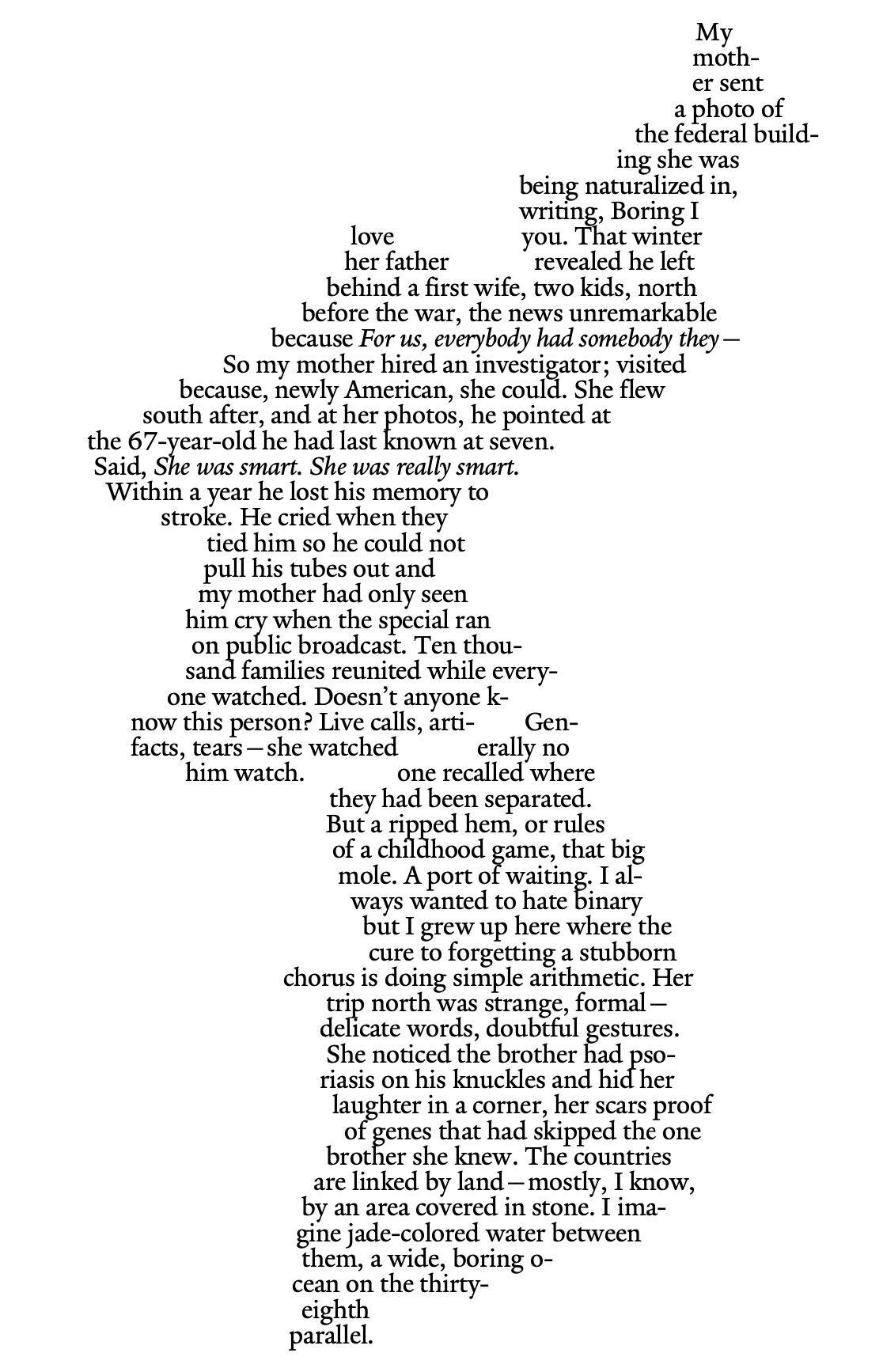
Both my works came from thinking about language as landscape and landscape as language. “Translator spells out a Korean phrase that literally means “does not even make words,” but more commonly signifies “does not make sense,” something like: no way. I wrote the text years ago thinking about the oddities of two languages unnoticeable to anyone living only in one of them; it was then a kind of coda to another work, and I was thinking about my role translating for my family. In practicing literary translation more recently, I began to understand the text as its own work. I was curious about what senses are created and refused in thinking of characters, letters, and words as shapes themselves, and used my own handwriting to fill. “Before the DMZ” I also wrote in its first form a long time ago but could not resolve at the time. It discusses a border that separates my family members and horizons my understanding of space, but also addresses my own estrangement from the country, having grown up in the U.S.. Imagining the DMZ as a gap in language, a visual lack of story, helped me finish the piece. I had taken a workshop with Diana Khoi Nguyen in which we explored the aesthetic possibilities of text as image, and both these works emerged from the technical skills she generously shared.
—Cindy Juyoung Ok

